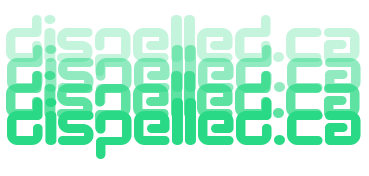Advanced Digital Circuit Design
Digital circuit design involves creating circuits that process discrete signals. This tutorial will explore advanced techniques in digital circuit design, including logic gates, flip-flops, counters, and programmable logic devices (PLDs).
Introduction to Digital Circuit Design
Digital circuits process discrete signals, typically represented as binary values (0 and 1). Advanced digital circuit design requires a deep understanding of digital logic, components, and design techniques to ensure accuracy, speed, and reliability.
Key Components in Digital Circuit Design
Here are some key components commonly used in digital circuit design:
- Logic Gates: Perform basic logical operations (AND, OR, NOT, NAND, NOR, XOR, XNOR).
- Flip-Flops: Store binary data and are used in sequential circuits (D, T, JK, SR flip-flops).
- Counters: Count pulses and are used in timing and control applications (binary, BCD, up/down counters).
- Shift Registers: Shift binary data in serial or parallel form (SISO, SIPO, PISO, PIPO).
- Multiplexers (MUX): Select one of several input signals and forward it to the output.
- Demultiplexers (DEMUX): Distribute a single input signal to one of several outputs.
- Programmable Logic Devices (PLDs): Customizable digital circuits (PLAs, PALs, CPLDs, FPGAs).
Logic Gates
Logic gates are the building blocks of digital circuits. Here are the basic logic gates and their functions:
- AND Gate: Outputs 1 if all inputs are 1.
- OR Gate: Outputs 1 if at least one input is 1.
- NOT Gate (Inverter): Outputs the complement of the input.
- NAND Gate: Outputs 0 if all inputs are 1 (NOT-AND).
- NOR Gate: Outputs 0 if at least one input is 1 (NOT-OR).
- XOR Gate: Outputs 1 if an odd number of inputs are 1.
- XNOR Gate: Outputs 1 if an even number of inputs are 1 (NOT-XOR).
Flip-Flops
Flip-flops are used to store binary data and are essential in sequential circuits. Here are the common types of flip-flops:
- D Flip-Flop: Stores the input data (D) on the rising or falling edge of the clock signal.
- T Flip-Flop: Toggles the output state on the rising or falling edge of the clock signal.
- JK Flip-Flop: Combines the features of the SR and T flip-flops. Can set, reset, or toggle the output state.
- SR Flip-Flop: Sets or resets the output state based on the input signals (S and R).
Counters
Counters are used to count pulses and are essential in timing and control applications. Here are the common types of counters:
- Binary Counter: Counts in binary (0, 1, 10, 11, ...).
- BCD Counter: Counts in binary-coded decimal (0-9).
- Up/Down Counter: Can count up or down based on a control signal.
Shift Registers
Shift registers are used to shift binary data in serial or parallel form. Here are the common types of shift registers:
- SISO (Serial-In Serial-Out): Shifts data in and out serially.
- SIPO (Serial-In Parallel-Out): Shifts data in serially and outputs it in parallel.
- PISO (Parallel-In Serial-Out): Loads data in parallel and shifts it out serially.
- PIPO (Parallel-In Parallel-Out): Loads and outputs data in parallel.
Multiplexers and Demultiplexers
Multiplexers and demultiplexers are used to select and distribute signals:
- Multiplexer (MUX): Selects one of several input signals and forwards it to the output.
- Demultiplexer (DEMUX): Distributes a single input signal to one of several outputs.
Programmable Logic Devices (PLDs)
PLDs are customizable digital circuits that can be programmed to perform specific functions. Here are the common types of PLDs:
- PLA (Programmable Logic Array): A customizable array of AND and OR gates.
- PAL (Programmable Array Logic): Similar to PLA but with a fixed OR array.
- CPLD (Complex Programmable Logic Device): A more complex PLD with multiple logic blocks.
- FPGA (Field-Programmable Gate Array): A highly flexible and customizable PLD with a large number of logic blocks.
Example: Designing a 4-Bit Binary Counter
Let's design a 4-bit binary counter using D flip-flops. Here are the steps:
Define Requirements
We want to design a 4-bit binary counter that counts from 0 to 15 and then resets to 0.
Select Components
- D Flip-Flops: 4 D flip-flops (e.g., 74LS74)
- Clock Signal: A clock source to drive the flip-flops
Create Schematic
Here is the schematic diagram of the 4-bit binary counter:
Clock
|
----
| |
Q0 D
| |
Q1 D
| |
Q2 D
| |
Q3 D
| |
GND GND
Simulate Circuit
Use a simulation tool like Multisim to simulate the 4-bit binary counter. Verify the counting sequence and timing.
Build Prototype
Assemble the circuit on a breadboard and test its functionality. Verify the counting sequence and check for any issues like timing errors or glitches.
Optimize and Iterate
Make necessary adjustments to the component values or layout based on testing results. Iterate the process until the desired performance is achieved.
Practice Exercises
Here are some practice exercises to help you develop your digital circuit design skills:
- Design a 4-bit shift register (SIPO). Create the schematic, simulate the circuit, and build a prototype.
- Design a 4-to-1 multiplexer. Create the schematic, simulate the circuit, and build a prototype.
- Design a 4-bit up/down counter. Create the schematic, simulate the circuit, and build a prototype.
- Design a 4-bit binary adder using logic gates. Create the schematic, simulate the circuit, and build a prototype.
- Design a simple state machine using flip-flops. Create the schematic, simulate the circuit, and build a prototype.
Check out some Bands on Bandcamp.com. Seven Times Refined by Altogether Steve and the Mercenaries, Crazy Fingers (Vancouver 1991), Flying Butt Pliers, and Hammy Ham Hands.
Proudly powered by a Text Editor, an IDE, an SFTP client, some Internet searches, and more recently help from some AI.
2025 dispelled.ca end of file.
